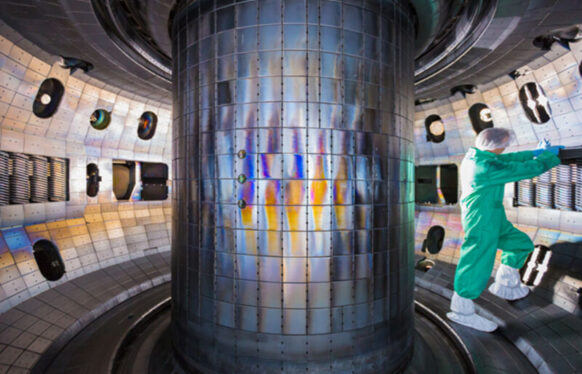
Enlarge / The interior or the DIII-D tokamak. (credit: General Atomics)
Using nuclear fusion, the process that powers the stars, to produce electricity on Earth has famously been 30 years away for more than 70 years. But now, a breakthrough experiment done at the DIII-D National Fusion Facility in San Diego may finally push nuclear fusion power plants to be roughly 29 years away.
Nuclear fusion ceiling
The DIII-D facility is run by General Atomics for the Department of Energy. It includes an experimental tokamak, a donut-shaped nuclear fusion device that works by trapping astonishingly hot plasma in very strong, toroidal magnetic fields. Tokamaks, compared to other fusion reactor designs like stellarators, are the furthest along in their development; ITER, the world’s first power-plant-size fusion device now under construction in France, is scheduled to run its first tests with plasma in December 2025.
But tokamaks have always had some issues. Back in 1988, Martin Greenwald, a Massachusetts Institute of Technology expert on plasma physics, proposed an equation that described an apparent limit on how dense plasma could get in tokamaks. He argued that maximum attainable density is dictated by the minor radius of a tokamak and the current induced in the plasma to maintain magnetic stability. Going beyond that limit was supposed to make the magnets incapable of holding the plasma, heated up to north of 150 million degrees Celsius away from the walls of the machine.
Read 18 remaining paragraphs | Comments




